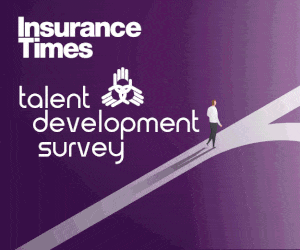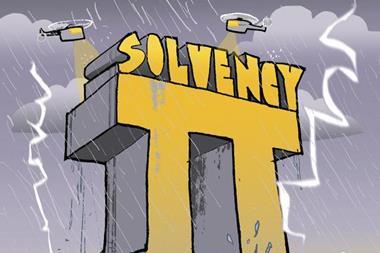What is Solvency II and what is driving it?
Solvency II is a wide-ranging and fundamental review of the overall financial position of European insurers and reinsurers. It aims to establish a revised set of EU-wide capital requirements, valuation techniques and risk management standards to be implemented by 31 December 2012.
In its drive for a single market, the EU initiated this project to develop a consistent European standard for the insurance industry that would protect policyholders’ interest more effectively by making firms less likely to fail. The project outcome should also make it easier for firms to do business across the EU as the current patchwork of varying local standards is replaced by an EU-wide standard.
How is Solvency II being addressed in the UK?
The FSA is driving the regulatory changes that Solvency II will bring. The authority, in turn, is responding to developments from the EU in Brussels that are being created under the Lamaflussy four-level process (as it takes an average of three years for member states to agree EU legislation, the Lamaflussy process was agreed to speed things up. It differentiates between framework legislation and technical implementation measures).
The four levels are:
Level 1: Establishing the framework principles for Solvency II and setting the legislative framework. This stage is now complete as the Solvency II directive text was adopted by the European Parliament on 22 April 2009, and endorsed by the Council of Ministers on 5 May last year. This directive includes the ‘go live’ implementation date of 31 December 2012, meaning that UK firms must comply by this date.
Level 2: This stage involves implementing measures to put the agreed principles of Solvency II into operation. This stage is currently underway.
Level 3: Under this stage, guidance is provided by the Committee of European Insurance and Occupational Pension Supervisors (Ceiops), on joint interpretation recommendations, consistent guidelines and common standards across the EU. This stage is also under way.
Level 4: This stage calls for the enforcement of the Solvency II directive across all member states.
What are the central elements of Solvency II?
Solvency II is a regulatory architecture based on three pillars.
Pillar 1 - Demonstrating adequate financial resources
This pillar contains the quantitative requirements that all firms must meet. There are two capital requirements; the solvency capital requirement (SCR) and the minimum capital requirement (MCR).
The SCR is a risk-based requirement and the key solvency control. Under Solvency II, firms can either choose to adopt the European standard formula or, with regulatory approval (from the FSA in the case of UK-regulated firms), use a full or partial internal model to determine capital requirements. The SCR covers all risks that a (re)insurer faces and takes into account any risk mitigation techniques.
The MCR is a requirement to hold a lower level of capital. But its breach will trigger the ultimate supervisory intervention, the withdrawal of authorisation for the firm to trade.
As a direct result of recent, near catastrophic, market events that have reinforced the importance of having the right amount of and the right quality of capital, Solvency II includes the provision of a ‘Pillar 1 dampener’.
This is a symmetrical anti-cyclical adjustment mechanism designed to allow for a reduction in capital requirements when equity markets are falling and, conversely, an increase when these markets are rising. The exact nature of this mechanism is being determined as part of the Level 2 process.
Pillar 2 – Demonstrating an adequate system of governance
This pillar contains qualitative requirements for risk management systems and prospective risk identification by firms.
Firms will be required to assess the risks that they have within their businesses and the level of solvency required to mitigate those risks, known as the Own Risk and Solvency Assessment (Orsa).
Ceiops has issued guidance stating that the Orsa is an internal risk assessment process that aims to ensure that a (re)insurer’s senior management has conducted their own review of the risks to which they are exposed and that the firm holds sufficient capital against those risks.
The Orsa will also enable the supervisor to draw conclusions about the ability of the firm to meet its own risks as it will provide supervisors with an early indicator of the firm’s solvency position.
Pillar 3 – public disclosure and regulatory reporting requirements
This pillar contains requirements for public disclosure of certain information to bring in market discipline and help to ensure the stability of (re)insurers. Firms must also report more information to their supervisors that is inappropriate for public disclosure but needed for effective regulatory supervision.
Under public disclosure, firms will need to produce an annual public solvency and financial condition report (SFC). The SFC will include financial information, a description of the business, the system of governance and the different risks faced including for each category of risk, the risk concentration, exposure and mitigation and sensitivity.
Supervisory review
Solvency II also determines supervisory activities. Of particular importance is proportionality meaning that supervisors must take into account the nature, scale and complexity of the firm in the design and application of the supervisory regime.
The directive also seeks to streamline the way that insurance groups are supervised, recognising the economic reality of how groups operate within Europe. It demands greater co-operation between supervisors and calls for a college of supervisors that will ensure group-wide risks are not overlooked. Groups will be able to use group-wide models and take advantage of group diversification benefits.
Where can I find about more about Solvency II?
There are several sources of information for UK firms including:
FSA: http://www.fsa.gov.uk/pages/About/What/International/solvency/index.shtml
HM Treasury: http://www.hm-treasury.gov.uk/fin_eufs_solvency.htm
The European Commission: http://ec.europa.eu/internal_market/insurance/solvency/index_en.htm
Ceiops: http://www.ceiops.eu/content/blogsection/9/1/
Eiops: http://ec.europa.eu/internal_market/insurance/committee_en.htm
As Solvency II has implications for the whole insurance industry, as well as functions such as actuarial, finance and IT within firms, insurance industry and professional association websites are also good sources of information.
Hosted by comedian and actor Tom Allen, 34 Gold, 23 Silver and 22 Bronze awards were handed out across an amazing 34 categories recognising brilliance and innovation right across the breadth of UK general insurance.











































